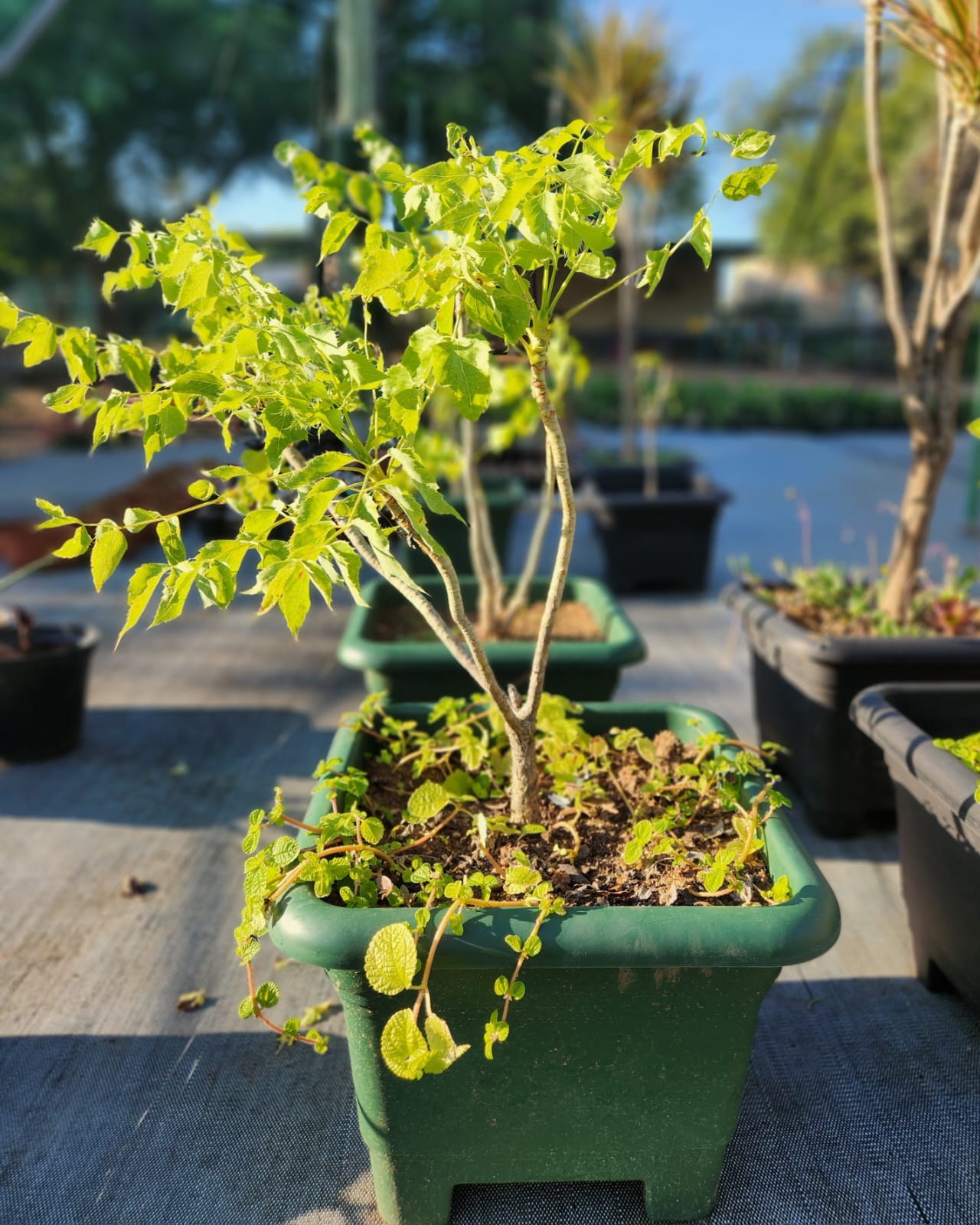Carrot Tree (Wortelboom) #
Steganotaenia araliacea

Traditional and ethnomedicinal uses reportedly include:
- Abortifacient and purgative applications
- Chewing fresh roots for sore throats and snake bites
- Ingesting root decoctions for asthma and mental disorders
- Taking root infusions to address infertility, amenorrhoea, epilepsy, and gonorrhoea
- Use in treating pneumonia, peptic ulcers, fever, and other microbial infections
- Use as a diuretic agent
- Using crushed tree trunks to deter snakes from homestead areas
- Treating diarrhoea with leaf decoctions
- Rubbing leaves on wounds as a general disinfectant
- Applying leaf sap as eye drops
- Washing the body of weak or ailing patients with root and bark infusions to promote strength
- Washing venom from the eyes with pounded leaves mixed with water following snakebite (a use that, while brave, involves exposure to irritants)
Not to be confused with the critically endangered species of flowering plant Daucus edulis, which shares its common name, Kruiekraal’s flagship tree – Steganotaenia araliacea – is one of the few known woody members of the carrot family (Apiaceae). Tentative fossil evidence suggests that its genus may date back to prehistoric times.
This small, aromatic, deciduous tree typically reaches around 5 meters in height. Its bark is greenish and corky, peeling in papery strips, and all parts of the plant emit a strong carrot-like aroma – most pronounced when the leaves are crushed. Remarkably, the tree often flowers and bears fruit while leafless. Its adaptability makes it well-suited to gardens.
In agroforestry, the carrot tree is sometimes grown as a hedge. It has been valued in soil conservation projects, as its leaf litter helps enrich the surrounding soil. The tree holds a longstanding place in traditional medicine across southern Africa. Due to the high concentration of bioactive compounds in its leaves, bark, and roots, it is considered medicinally potent. However, concentrations vary between individual plants, and safe use depends on preparation, dosage, and awareness of potential side effects.
The leaves of the carrot tree are rich in saponins. Phytochemical studies have shown that the saponins exhibit antileukaemic activity, and bark extracts have demonstrated antioxidant and antibacterial properties, including activity against Staphylococcus aureus, Salmonella Typhi, and E. coli.
Caution: Consult a qualified health practitioner before considering medically using or ingesting any plant parts. Any mentioned traditional uses are based on cultural practices and anecdotal evidence. They are not necessarily clinically proven or supported by modern scientific studies.